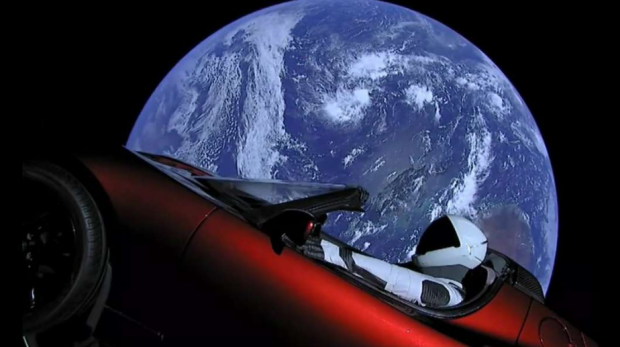
Breaking News
 The Days of Democracy Are Over
The Days of Democracy Are Over
 Elon Musk Described an AI Device to Replace Phones in 5 Years
Elon Musk Described an AI Device to Replace Phones in 5 Years
 Deposit Insurance For Billionaires?
Deposit Insurance For Billionaires?
 Rep. Troy Balderson Is Right: Coal And Gas Drive Affordable, Reliable, And Clean Energy
Rep. Troy Balderson Is Right: Coal And Gas Drive Affordable, Reliable, And Clean Energy
Top Tech News
 Graphene Dream Becomes a Reality as Miracle Material Enters Production for Better Chips, Batteries
Graphene Dream Becomes a Reality as Miracle Material Enters Production for Better Chips, Batteries
 Virtual Fencing May Allow Thousands More Cattle to Be Ranched on Land Rather Than in Barns
Virtual Fencing May Allow Thousands More Cattle to Be Ranched on Land Rather Than in Barns
 Prominent Personalities Sign Letter Seeking Ban On 'Development Of Superintelligence'
Prominent Personalities Sign Letter Seeking Ban On 'Development Of Superintelligence'
 Why 'Mirror Life' Is Causing Some Genetic Scientists To Freak Out
Why 'Mirror Life' Is Causing Some Genetic Scientists To Freak Out
 Retina e-paper promises screens 'visually indistinguishable from reality'
Retina e-paper promises screens 'visually indistinguishable from reality'
 Scientists baffled as interstellar visitor appears to reverse thrust before vanishing behind the sun
Scientists baffled as interstellar visitor appears to reverse thrust before vanishing behind the sun
 Future of Satellite of Direct to Cellphone
Future of Satellite of Direct to Cellphone
 Amazon goes nuclear with new modular reactor plant
Amazon goes nuclear with new modular reactor plant
 China Is Making 800-Mile EV Batteries. Here's Why America Can't Have Them
China Is Making 800-Mile EV Batteries. Here's Why America Can't Have Them
NASA unveils new rules to protect the moon and Mars from Earth germs

NASA has unveiled new policies to protect the moon and Mars (and Earth) from contamination as human spaceflight advances.
The agency released two NASA Interim Directives (NIDs) today (July 9) that detail new requirements for human and robotic missions traveling to and from the moon and Mars. These directives were enacted to protect the planetary bodies from any possible biological contamination that could originate on Earth and ultimately interfere with scientific research (or additionally, in the case of Mars, to also prevent any possible biological material from being brought home to Earth.)
One of the newly announced NIDs addresses the potential issue of forward biological contamination — contamination brought from Earth to another planetary object — on future moon missions. The second NID deals with Mars and covers both forward and backward contamination (the type brought to Earth from another cosmic body).
These NIDs were created with the interests in three specific space communities in mind, NASA officials said.
"We're trying to balance the interests of the science community, the interest of the human exploration community and the interest of the commercial community," NASA Administrator Jim Bridenstine announced today while revealing the NIDs during a "Moon Dialogs" webinar hosted by the nonprofit Secure World Foundation. NASA's Office of Planetary Protection, which is housed within the Office of Safety and Mission Assurance, will ensure that these directives are complied with, Bridenstine added.

 China Innovates: Transforming Sand into Paper
China Innovates: Transforming Sand into Paper

